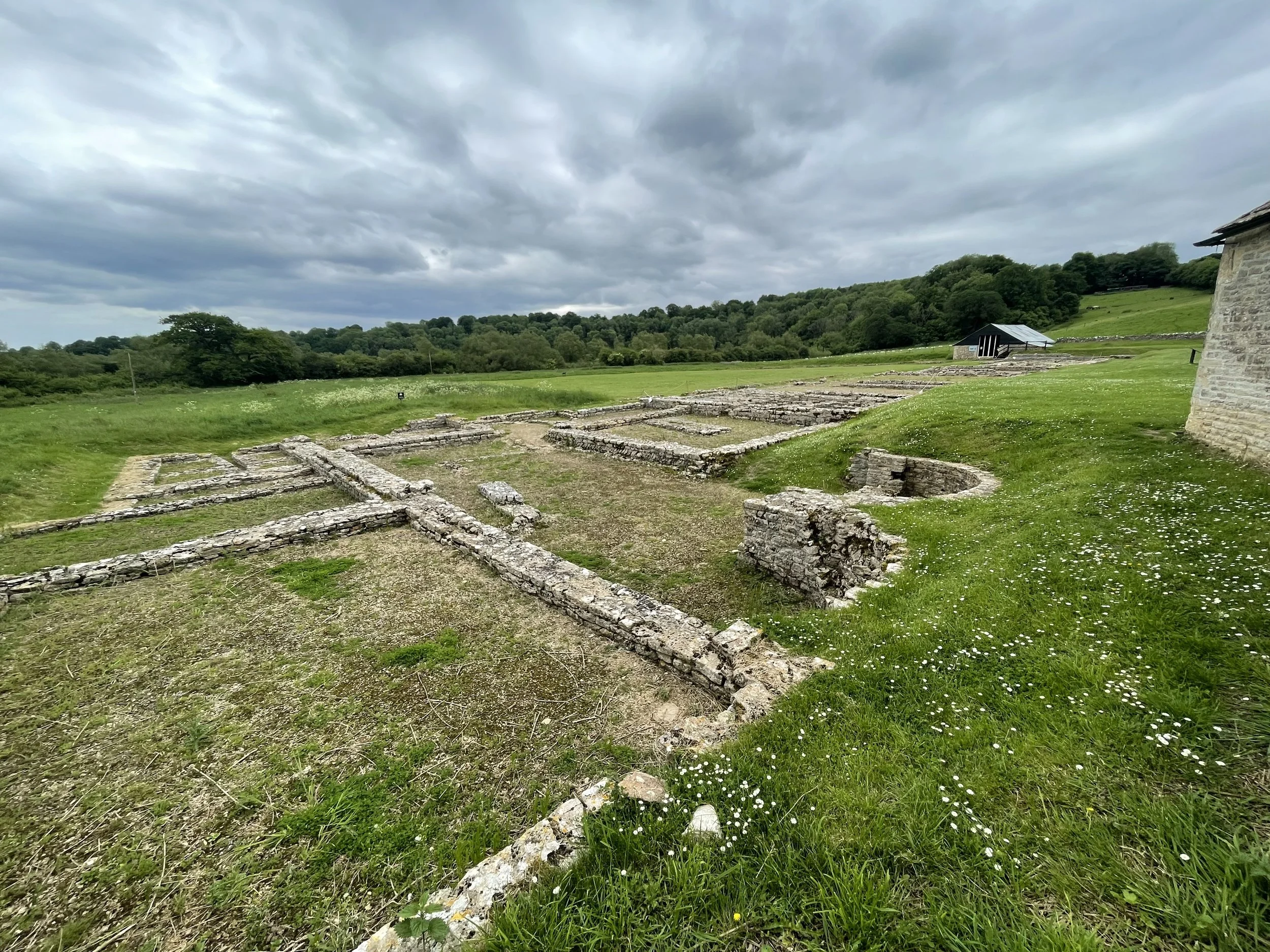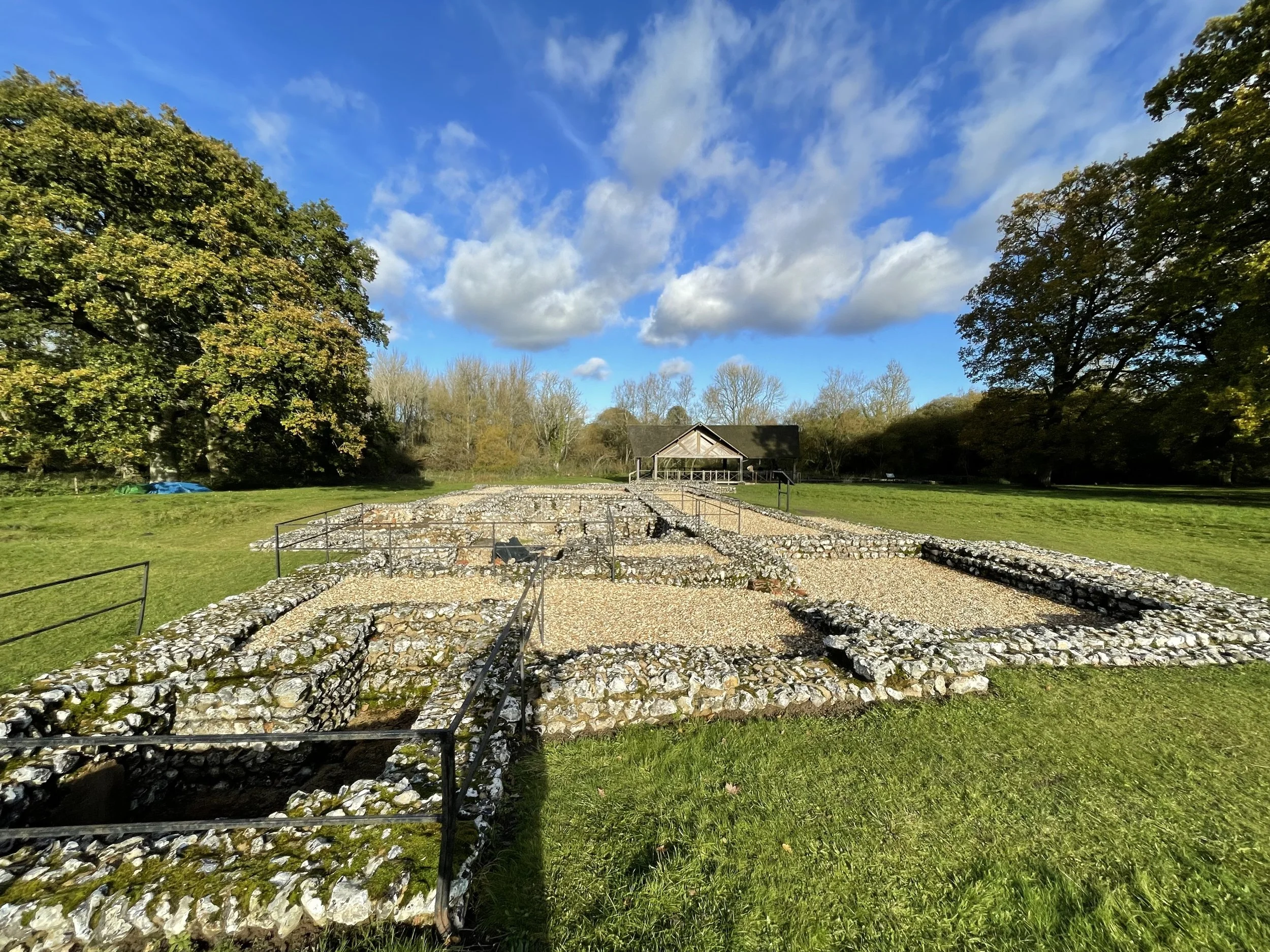Kirk’s Journal: Walking with the Romans
From lonely hill forts to ancient hot springs, England’s Roman legacy stretches across the landscape like a forgotten thread through time. I set out on a journey to follow that thread — not through museum cases or history books, but by standing where the Romans once stood, across some of the most atmospheric and remote Roman sites in the country that gave inspiration to the Province of Britannia Golden Ale.
Where the Empire Landed: Isle of Thanet
My journey began on the Isle of Thanet, a name that doesn’t often appear on Roman itineraries — but should. This eastern corner of Kent, now landlocked but once separated from the mainland by a channel, is believed to have been a key landing point during the Roman invasion of Britain in 43 AD.
Standing near Ramsgate, just inland, I could imagine Roman ships appearing on the horizon, bringing soldiers, engineers, and ambition. While much has changed, the flat coastal landscape still feels like a threshold — not just between land and sea, but between worlds.
To the West: Bath and the Waters of the Gods
From Kent, I travelled west to the city of Bath, known to the Romans as Aquae Sulis. The natural hot springs here were once considered sacred — a rare blend of Roman engineering and native Celtic spirituality. The baths they built around the springs are still remarkably intact.
Walking among the columns and rising steam, I could feel the weight of 2,000 years. This was a place where governors bathed, where soldiers sought healing, and where prayers to the goddess Sulis Minerva were cast into the water on thin sheets of inscribed lead. The mix of ritual and relaxation still lingers in the air.
Quiet Grandeur: North Leigh Roman Villa
Leaving the city behind, I headed into the peaceful Oxfordshire countryside to visit North Leigh Roman Villa, a hidden gem nestled in a field outside Witney. Once a wealthy rural estate, the villa features remarkably preserved mosaic floors, hypocaust heating systems, and a sweeping view of the surrounding valley.
Standing where a Roman family once dined, bathed, and looked out over their land, I saw a different side of empire — one of stability, prosperity, and quiet ambition. This wasn’t the frontier, but home.
Myth in Stone: Littlecote Roman Villa
Further west, near the Wiltshire-Berkshire border, I arrived at Littlecote Roman Villa — one of the most impressive villa sites in England, and home to the extraordinary Orpheus mosaic, set within a pagan shrine. Here, myth and religion meet in a vivid, almost dreamlike work of art.
The site also includes bathhouses, agricultural buildings, and a private chapel — hinting at a complex life that stretched from Roman times through the Saxon and medieval periods. It felt like a place where layers of belief and culture had accumulated like sediment, each one adding depth to the story.
Among all the sites I visited, Littlecote felt the most mysterious — a place where Roman Britain touched something older, deeper, and perhaps still sacred.
Northbound to the Wall: Housesteads Roman Fort
No Roman journey across England is complete without a visit to Hadrian’s Wall — and I made my way north to walk its windswept ridges. The Wall stretches across the narrowest part of Britain, a monumental symbol of control, defiance, and endurance.
At Housesteads Roman Fort, perched high on the Whin Sill ridge, the view is commanding and wild. The remains of the barracks, hospital, and latrines are haunting — not because they’re in ruin, but because they feel paused. Here, at the edge of empire, soldiers once stared into the same wide northern skies, wondering what lay beyond the wall.
Reflections on the Wall: Walking with Ghosts
Back on Hadrian’s Wall, I ended my journey walking a final stretch along the stone path, boots dusty, mind quiet. I thought about how these ruins — spread from Kent to Cumbria — aren't just relics of an empire, but touchstones of endurance, resilience, and legacy.
The Romans came to conquer, to build, to control — but what they left behind is something deeper. Roads that still shape our routes. Settlements that became cities. Forts that turned into farms. And above all, stories that refuse to be forgotten.




